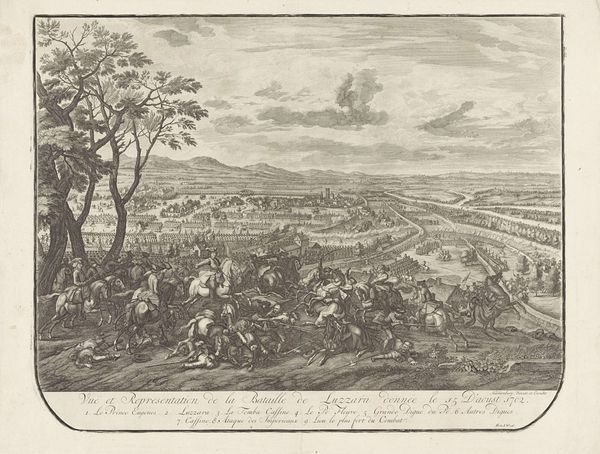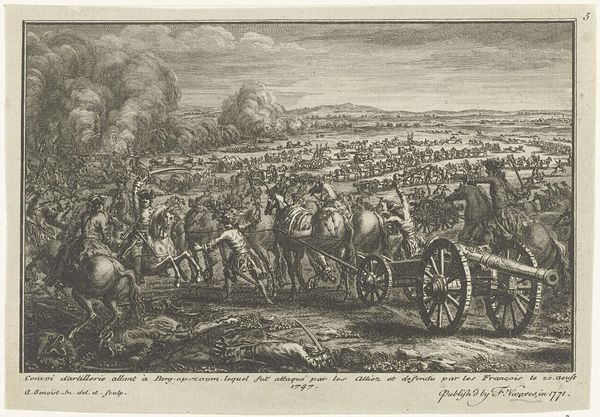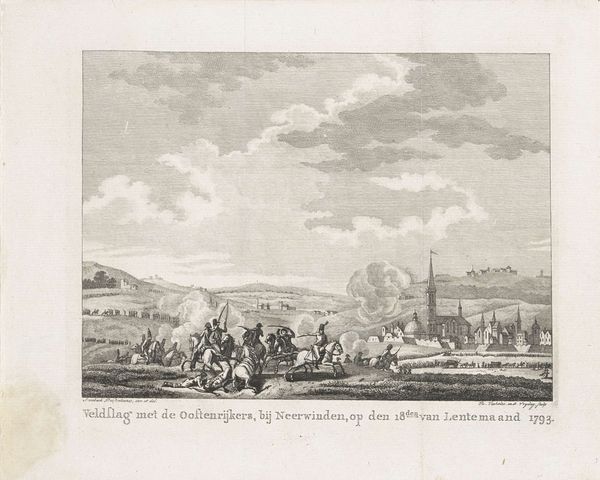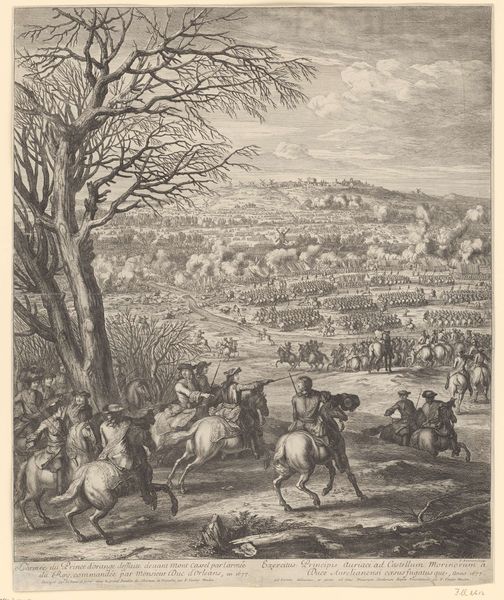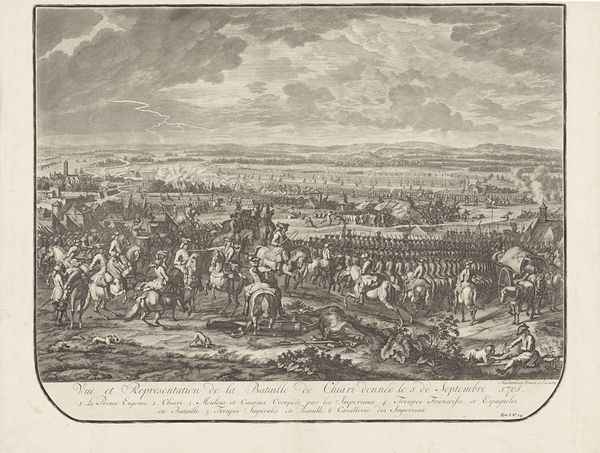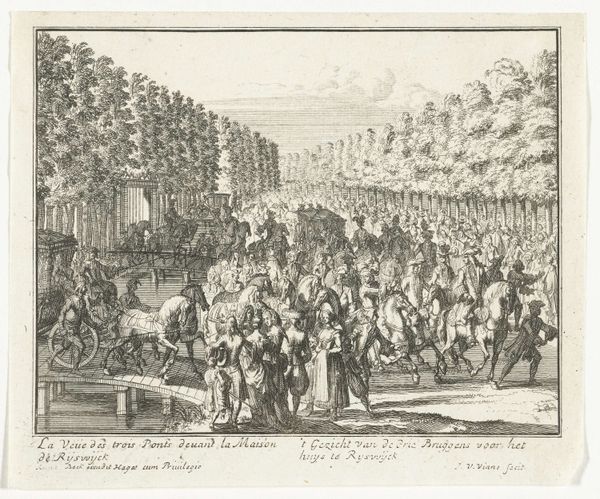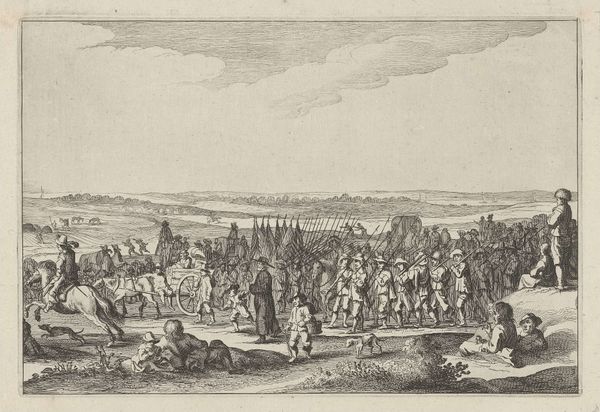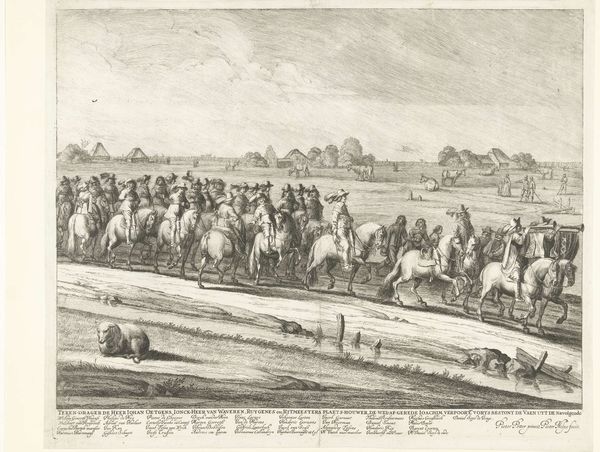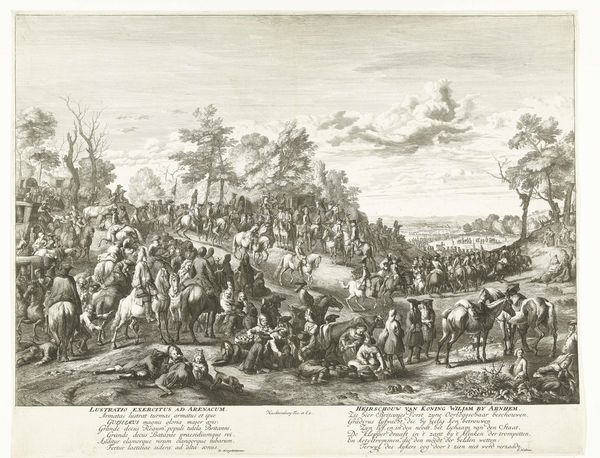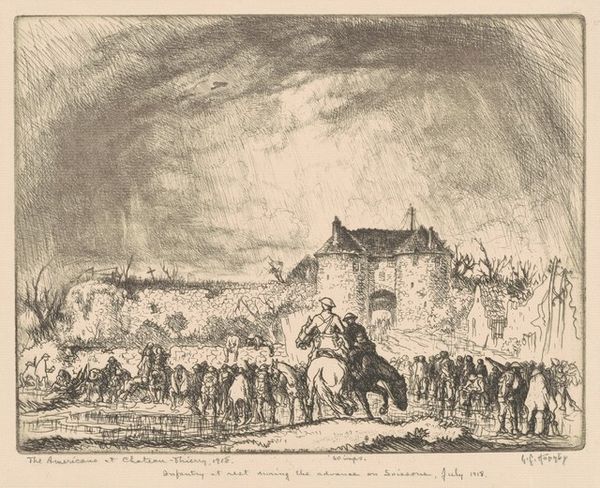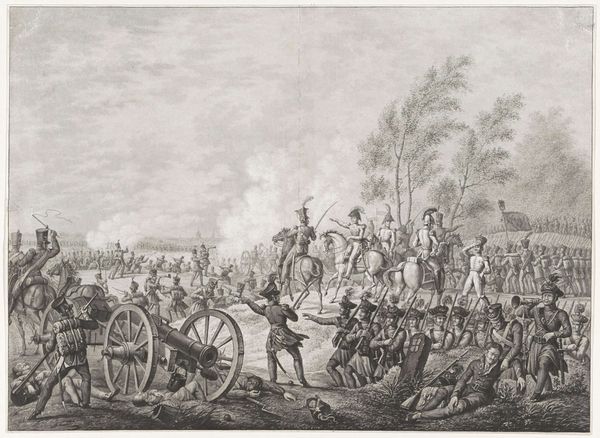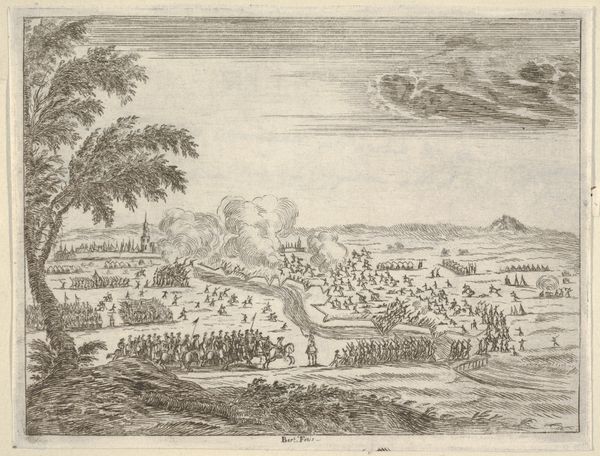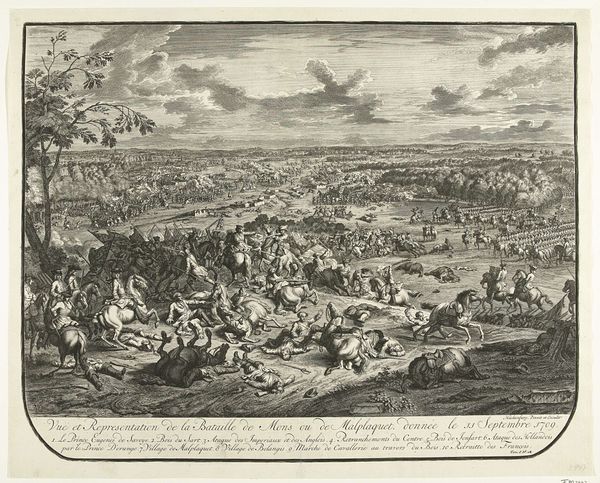
Dimensions: height 137 mm, width 204 mm
Copyright: Rijks Museum: Open Domain
Curator: This print, "Frans legertransport naar Maastricht, 1747," an engraving by Antoine Benoist and published in 1771, gives a bird's eye view of the French military transport headed to Maastricht. Editor: Immediately, I'm struck by how labor-intensive this military operation appears. The scale of transport! Consider the sheer amount of manpower and resources, of horses, carts. Even the landscape becomes a road, subsumed by the demands of warfare and colonial ambitions. It's all about infrastructure. Curator: Indeed, war and procession have always been symbolically intertwined. Note how the smoke in the background mimics the shape of clouds, a kind of hellish imitation of heaven, almost legitimizing the events portrayed. Editor: You see legitimization; I see pure logistical machination. Each horse, each cart, each component—from the iron fittings on the wagons to the wood of the wheels, tells a story of production, exploitation, and material demand. Think of the mines, the forges, the deforestation… Curator: But consider too the cartouche at the bottom of the work, it seeks to communicate with us, its text solidifying the representation. These battles are historical events that still resonate culturally. They represent France’s imperial ambition at this time. Editor: And let's be very precise, those impressions we receive of such symbols in war come down to one essential question: Who profited? Because you can bet there are individuals extracting surplus value from this very war being portrayed! We must consider how those engravings circulated. What audience consumed them? Were they for propaganda or documentation or some unsettling mix? Curator: Perhaps both! Benoist cleverly fuses documentary with iconic grandiosity, but I’m taken with the landscape’s attempt at permanence, a stark contrast to the scene's temporality as we look to what these individuals sought in history. Editor: Indeed. It's easy to overlook how fundamentally prints changed the nature of image-making. Now we consider, how it moved war materials in great numbers and supplied it to an empire building itself through violent subjugation. A single object speaks volumes. Curator: What a fitting reflection as we step away from Benoist's work! Editor: Absolutely, let us reflect on the many networks intertwined with such imagery, especially with regards to that age.
Comments
No comments
Be the first to comment and join the conversation on the ultimate creative platform.
